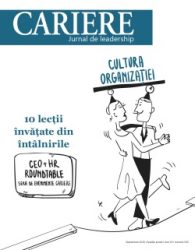Social Media
A: This is a question keeping many chief executives and company founders awake at night as they struggle to keep up with rapid changes in the digital world. The swift rise of new communication channels such as Facebook and Twitter have caused many executives to reassess how they stay in touch with their customers, with employees and, increasingly, with the media itself.
Companies’ relationships with their customers have suddenly changed. People no longer want to be sold to; they want companies to help them find an informed way to buy the right product or service at the right price. They still watch ads, but often online rather than on TV, and they’re much more likely to view ads that friends have recommended. When something goes wrong with a product, they want to be able to reach the company instantly, and they expect quick solutions.
How companies adapt to this energetic and sometimes chaotic world will define their future success. The website, Facebook page, blog and Twitter feed are no longer add-ons to a business’s communication budget: They should be central to its marketing strategy, and used in coordination with other marketing efforts.
As a first step in addressing your problem, make sure that your site is set up not just to handle transactions, but also for communication – and that when customers leave comments or send e-mails, your team always follows up. Look at every contact as an opportunity to build stronger relationships with your customers. Depending on the channels you choose, this might mean helping your customer service staff adapt to new methods of communicating. Once they have, you must continue to keep in touch with customers yourself.
In the past, I would ask Virgin customers to write to me with problems or ideas, and I often called people to talk about the problems that came up. It was a great way to check on our businesses’ quality and standards – though many of the complainants believed one of their friends was playing a practical joke on them. To this day, I try to answer as many e-mails as I can and encourage our executives to do the same.
Neil Berkett, the chief executive of Virgin Media, our U.K. cable and telecom group, recently told me that he gets at least 20 to 30 e-mails a day from customers, and he tries to respond with a brief, direct note within hours. This has helped him improve the company’s reputation for customer service, which needed some work when we first combined NTL, Telewest and Virgin Mobile to create Virgin Media in 2007.
Beyond customer service, you may need to consider that the old divisions between advertising, marketing and public relations have broken down, so it’s time to review how your marketing team works. Virgin Atlantic recently created a Social Relations team to manage the combined media space and to make sure our sites and communications are current and interesting, maintaining the cheeky flair that characterizes the brand.
We have always tried to maximize the impact of our advertising through clever PR, daring stunts and amusing media campaigns. The rise of social media has presented some exciting challenges to the status quo and caused us to question our usual ways of doing business. When we launched a new global ad for Virgin Atlantic on TV and in theaters – full of humor, fun and with a touch of glamour – the ad also started to generate a big following online, as it was promoted by our fans to their friends. This extended the reach of our ad far beyond our usual audiences.
To succeed, such efforts must be supported from the top. David Cush, CEO of Virgin America, freed up the management of these channels from the company’s classic hierarchy. His social media team is made up of 20-somethings who have been selected to run the online services. David says they have been given broad guidelines and then let loose.
These employees, who were “born digital,” have placed Facebook and Twitter at the center of the company’s communication strategy, capturing the Virgin spirit online. When the American Society for the Prevention of Cruelty to Animals contacted Virgin America to find out if we would help fly Chihuahuas from the West Coast to the East Coast, because the shelters were so full of dogs of this breed that they had a better chance of finding homes elsewhere, we agreed straight away. Some of our caring crew members volunteered to accompany the pups, and we sent them off in style on a flight from San Francisco to New York.
The team promoted this story through all channels. It went viral and also sparked the interest of the traditional media – drawing attention to the ASPCA and Virgin Atlantic’s efforts to help. We then used the story as the basis of a very successful online sale on flights to Mexico.
To succeed, entrepreneurs and business leaders must look at this rapidly changing world through a different lens; by working with your online sites, services and teams, you can transform these challenges into opportunities.

